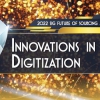Operational Assessments
Guiding Principles
Corporate Real Estate Services organizations face increased demand for workplace optimization strategies that improve both the effectiveness and efficiency of resources, and the organization’s ability to attract and retain talent. Managers of real estate services organizations are under extreme pressure to support these strategic objectives and as a result, many are conducting detailed assessments of their operations to improve service delivery and the efficiency of the workplace for all stakeholders.
Whether the operational assessment is conducted internally, or by an outside consultant, there are several guiding principles that should be considered:
- Clearly identify the "goals" of the project.
- Agree on which functional areas and/or services are to be included within the assessment.
- Communicate with senior management to identify any "sacred cows" (services or functions that are not to be included within the assessment).
- Obtain senior management buy-in and support.
- Document the critical business drivers of the department(s) involved.
- Conduct a "360 degree" series of interviews to solicit feedback from all stakeholders involved or impacted by the service.
- Document all findings, including positive and negative feedback.
Establishing the Financial Baseline
Most internal service organizations struggle to
establish a financial baseline for effective benchmarking. Expenses are typically categorized in a way that makes sense for the overall company, but these expenses often need to be re-categorized for effective industry comparison. Plus, not all organizations have systems in place that collect sufficient data on the volume and type of activities performed. Many organizations default to high level analysis with aggregated data. This makes it difficult to assess the value of proposed changes and may result in broad based assumptions that could be inaccurate. How can you avoid this trap?
Data Gathering
First, gather specific data such as internal staffing allocations, cost of salary and fringe benefits, allocations of corporate overhead costs, materials and supplies, contracted services and annual volumes that relate to each of the services. Second, build a financial model that maps to industry standard reporting and calculate a true "total cost" for each service on an annual, activity or unit cost basis, whichever is most appropriate. Third, validate that the total costs tie back to your operating statements and/or general ledger reports.
Consider, for example, Facilities Management services. You might re-allocate all operating expenses into separate cost categories on a building by building basis. For example, current baseline cleaning costs for Building 1 average $1.35 per rentable square foot, total repair and maintenance costs for Building 1 average $1.80 per rentable square foot.
Benchmarking and Analysis
Once your baseline is complete, gather current benchmark data on comparable costs for each of the services. In some instances, published industry benchmarks are available. In other cases, average unit costs for services such as project management or mail services may be obtained by contacting peer organizations, participating in benchmarking forums or using consultants.
Significant differences between your baseline and the market need to be researched and explained, and there may be good reasons for some variances. As companies focus more on employee experience rather than cost reduction, a conscious choice may be made to invest in service levels above the industry norm.
Next, identify potential inconsistencies in spend and develop a preliminary action plan that identifies the level of opportunity and ease of implementation.
Analyzing the Operation
Significant variances between your baseline and benchmarks may identify potential opportunities. However, not all opportunities are defined by financial savings. Inefficiencies, redundancies, frustrations and time-consuming or unnecessary steps may all occur within an economically competitive process, yet their elimination presents opportunities to increase competitiveness.
The next step is to interview customers, staff, management and support operations. Seek candid feedback using questions like:
- What services/activities do we provide to you (do you provide to us)?
- Are these the right services?
- What is the current process through which these services are delivered?
- What works well about this process?
- What would you change if you could?
The group should now be able to document comprehensive workflows. These workflows are used to develop your future state service level agreements. All points of integration should be mapped. An objective assessment of the workflows identifies the redundant or non-value-added steps, the number of hand-offs or points of integration where the opportunity for error is increased and the "pain points" that need to be minimized.
The final step is to pull the team together for a "blue sky" session. Given what you have documented, if there are no rules, no limitations and no "sacred cows," how should you do things? A trained facilitator can add significant value to the session. Your goal is to tear down paradigms and develop the "ideal" environment.
Business Process Improvement
Organizational and Service Delivery Redesign
As the team migrates from assessment to resolution, the focus shifts from identifying what needs to change to how to achieve the necessary changes. Even though the optimum process was designed in an "ideal" environment, the future organization must operate effectively in the real environment, which is rarely ideal.
An optimized organization usually involves significant use of technology and an appropriate balance of internal and external resources. Well-defined service level agreements and expectations will affect organizational design decisions and allow both internal employees and external provider(s) to have a clear understanding of the service delivery expectations.
Technology has a tremendous impact on the appropriate organizational design. Sophisticated systems minimize staff. Comprehensive management and reporting systems support and potentially replace some of the more time-consuming customer/vendor management functions.
In the final analysis, the design should represent a vision of the ideal organization where redundancies are eliminated, hand-offs are minimized and a single point of accountability is achieved.
Technology and Automation
In many cases automation contributes significantly to streamlined operations. Nowadays, there is little need to create homegrown systems. Solutions range from fully integrated suites to best of breed/narrowly focused boutique packages.
Consider tools that are already in use which may work well with additional investment or better defined processes and procedures. To begin, delineate system specifications along three categories: critical functionality, necessary capabilities and desired but not required functions. Prioritize your needs and provide a weighting to each one. Identify and evaluate your options and develop a business case to support your selection. Support organizations often find it difficult to obtain the funding and prioritization for critical IT needs and it is often helpful to enlist the support of an executive sponsor.
During implementation, focus on reengineering process, policy and controls to support the new technology. Monitor compliance, manage expectations and strive to stay current with user needs.
Finally, if the new system was purchased with the intent of generating a significant return on investment (ROI), refer back to the original financial baselines to validate the projected savings or revenues. Report frequently to your executive sponsor(s), senior manager(s) and end users.
Now that the current Environment Assessment is complete, the team has made a clear recommendation on the design of the future organization and the
service delivery strategy. These recommendations typically span people, process, technology and cost.
Whether the solution design entails a fully integrated outsourcing strategy or not, it is rare today for an organization to be able to resource every aspect of their service delivery internally. Therefore it is imperative that the organization effectively manages any strategic sourcing efforts in order to capture the full benefits of partnering with external service providers. The next article in the series will cover topics including vendor pre-qualification,
bid strategy, development and administration, contract negotiation and transition management.









